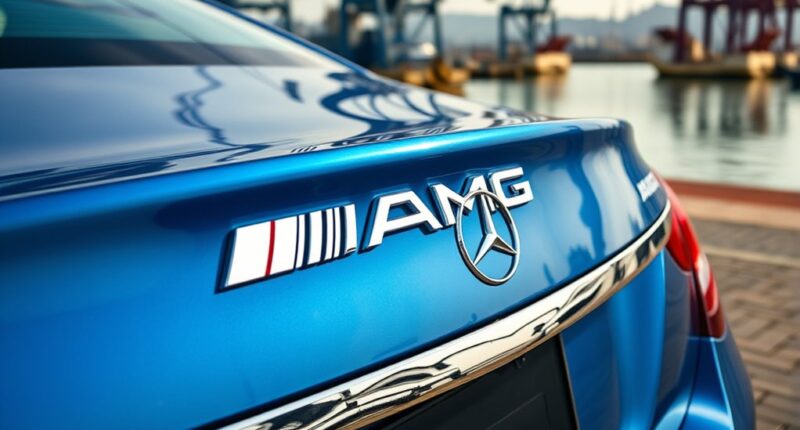Porting and polishing your Mercedes AMG C63’s cylinder heads can improve airflow, boost horsepower, and enhance engine response when done carefully. It involves shaping and smoothing intake and exhaust ports with specialized tools, but it’s essential to avoid damaging critical areas or weakening the structure. Properly executed, this upgrade offers noticeable performance gains. If you keep exploring, you’ll discover how to do it safely, cost-effectively, and in accordance with regulations.
Key Takeaways
- Port and polish enhance airflow and engine efficiency, increasing horsepower and torque for Mercedes AMG C63.
- Proper techniques involve shaping intake/exhaust ports with precision tools to avoid damaging critical areas.
- Modifications may require ECU tuning and can affect warranty, emissions compliance, and engine reliability.
- Professional porting often involves CNC machining, with costs around $5,700, plus polishing and installation time.
- Post-modification monitoring includes dyno testing, airflow analysis, and maintenance to ensure optimal performance and durability.
Understanding the Basics of Porting and Polishing
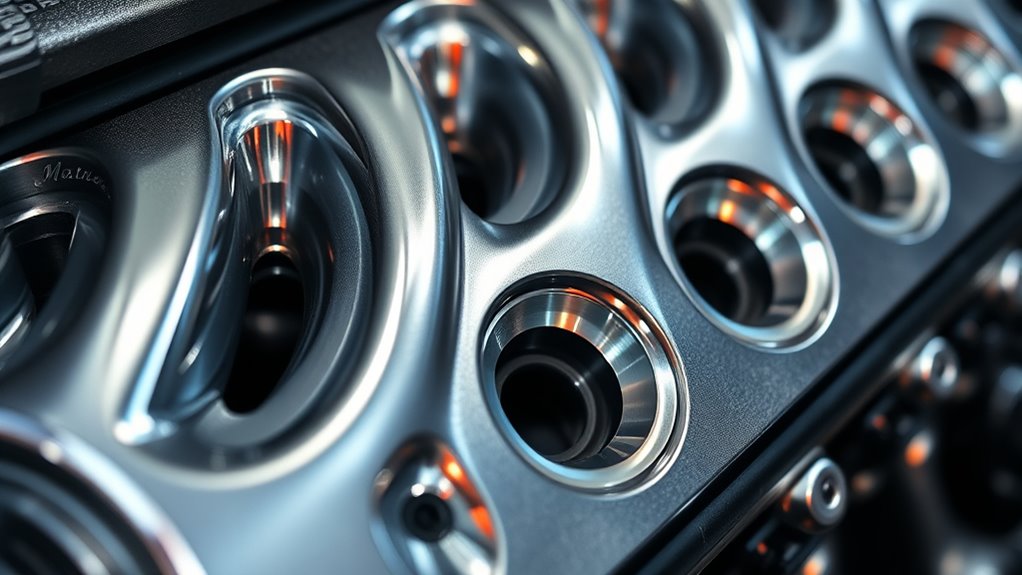
Porting and polishing are vital modifications that enhance your engine’s airflow and efficiency by customizing the cylinder heads. These processes involve shaping and smoothing the intake and exhaust ports to improve how air and fuel enter the combustion chambers. You’ll need tools like sanders, grinders, and polishing bits, often operated with a Dremel or similar device. The goal is to optimize airflow, which can boost performance without changing the engine’s fundamental design. Success depends on understanding airflow dynamics and precise material removal to avoid over-smoothing or damaging critical areas like valve seats. Skilled handling of tools and careful inspection are essential. Proper porting and polishing require patience and attention to detail, ensuring your modifications support better engine breathing and overall efficiency. Additionally, maintaining proper airflow dynamics is crucial for achieving optimal results and avoiding potential damage during the process. Being aware of airflow behavior helps prevent common mistakes and ensures your modifications lead to meaningful performance gains. Understanding venturi effects can further help in designing and refining port shapes for maximum efficiency.
Potential Performance Benefits for the Mercedes AMG C63

Optimizing the intake and exhaust ports on your Mercedes AMG C63 can lead to noticeable performance gains. By refining the intake port shape, you’ll boost airflow efficiency, potentially increasing horsepower and torque. Smoother exhaust ports help reduce backpressure, improving engine response and overall power delivery. When combined with a valve job, these modifications can enhance airflow consistency, leading to slight but meaningful gains. While the C63’s original design is highly precise, careful porting can still *release* marginal improvements in fuel efficiency and engine sound. Additionally, understanding the porting process and its limitations is essential to avoid unintended performance decreases. Consulting with experienced performance tuners can help optimize results and prevent common pitfalls. Furthermore, being aware of the vetted nature of available modifications ensures you choose quality work that aligns with your performance goals. Proper evaluation of the port geometry can reveal potential areas for improvement without compromising the engine’s integrity. However, keep in mind that the sophisticated port geometry limits significant gains, and improper work might decrease performance. To maximize benefits, professional expertise and thorough dyno testing are essential, ensuring your modifications deliver the desired performance improvements without risking engine health.
Key Technical Factors to Consider Before Modification
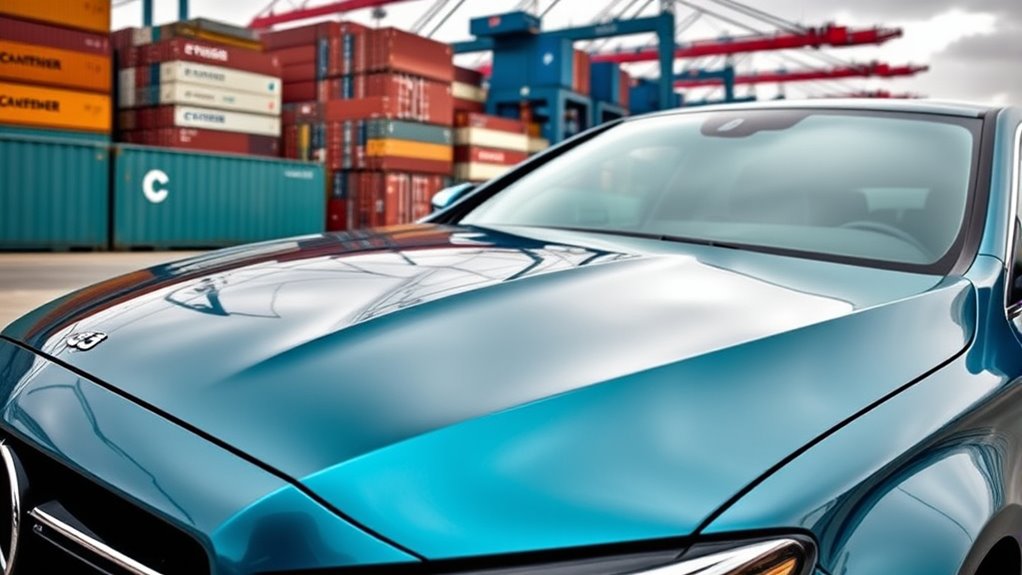
Before modifying the intake and exhaust ports on your Mercedes AMG C63, it’s essential to understand the complexities involved in the factory design. The factory casting is highly precise, so expert-level porting is necessary to avoid flow disruptions. Over-polishing intake runners can reduce fuel atomization, affecting efficiency, while exhaust port recontouring should preserve flow velocity rather than mirror polishing. Maintaining valve seat concentricity within tight tolerances is crucial to prevent compression loss, and port modifications must match combustion chamber volume precisely to retain factory compression ratios. Additionally, aluminum alloy properties demand controlled machining depths to avoid weakening critical areas. Protecting cooling channels and thread engagement standards during porting is vital to prevent leaks or damage. Proper planning and adherence to engine component specifications ensure performance gains without compromising reliability or engine integrity. Furthermore, understanding cybersecurity vulnerabilities related to modern vehicle electronics can help safeguard your vehicle’s electronic systems during modifications. Incorporating quality assurance principles can also help ensure that modifications are performed to high standards, minimizing the risk of errors and defects. Moreover, consulting with specialists experienced in porting techniques can significantly improve the accuracy and safety of your modifications. Recognizing the importance of state-specific regulations can help you stay compliant during your customization process.
Assessing Cost, Time Investment, and Expected Gains

Evaluating the cost, time investment, and potential gains of porting your Mercedes AMG C63’s cylinder head is essential to determine if the modification aligns with your goals and budget. The process involves expenses like CNC ported heads at around $5,699, with possible additional costs for polishing, valve jobs, and hardware. Labor for installation can take several days to a week, and processing cores may require about six weeks. While porting markedly boosts airflow, performance, and throttle response, these gains often require ECU tuning for maximum benefit. Keep in mind that scheduling and costs vary by location and shop. Weighing these factors helps you decide if the improved power and efficiency justify the investment, considering your long-term driving goals. Additionally, understanding Retirement Planning principles can help fund future modifications without financial strain. Proper planning can also account for potential performance upgrades that may be desired later on, ensuring your budget accommodates future enhancements. Recognizing the legalities and zoning regulations in your area can prevent unforeseen complications during your upgrade process. Moreover, being aware of relationships and trust issues can be beneficial if you plan to involve others in your vehicle modifications or share your goals with a community. Incorporating automation technology in your planning process can streamline decision-making and improve project management.
Safety Risks and Reliability Concerns With Engine Modifications
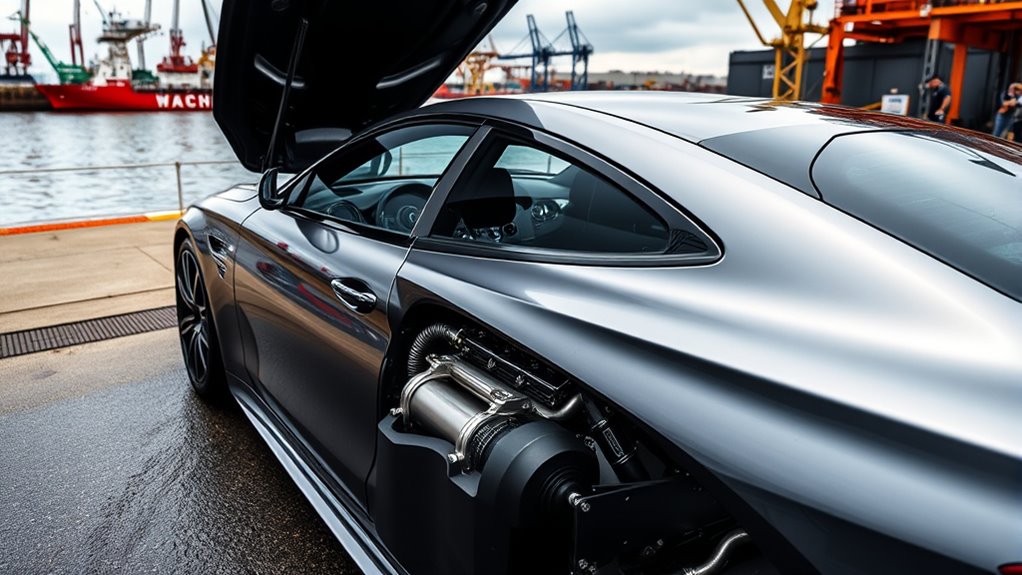
Engine modifications like porting and polishing can markedly boost your Mercedes AMG C63’s performance, but they also introduce notable safety risks and reliability concerns. These upgrades can weaken the cylinder head bolts, especially if corrosion or stretching occurs, risking head gasket failure. Increased combustion pressures stress aging components such as camshafts and lifters, accelerating wear. Precise machining is essential; errors can create structural weak points or alter compression ratios, risking piston-to-valve contact. Cooling systems may become compromised, leading to overheating or uneven heat dissipation. Additionally, modifications can cause detonation, AFR imbalances, and exhaust backpressure issues, reducing reliability. Over time, these risks may void warranties and lower resale value, making safety and durability a serious consideration before proceeding. Proper maintenance and adherence to regulatory standards are crucial to ensure safety and compliance.
Finding Professional Support and Community Insights
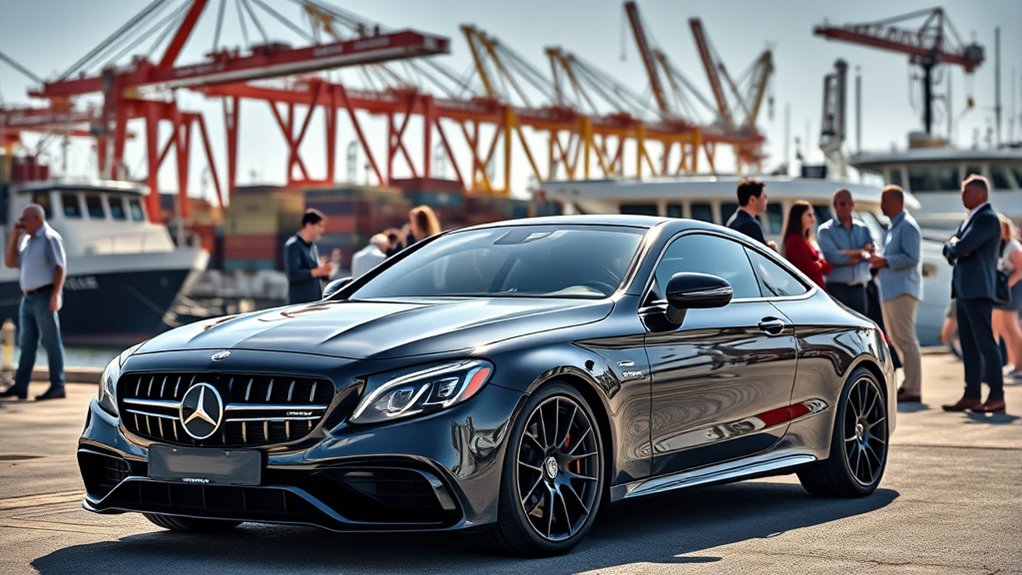
Finding the right professional support and community insights is essential when *contemplating* porting and polishing your Mercedes AMG C63. Specialized shops like Weistec Engineering offer CNC ported heads with impressive airflow gains, but you’ll need to consider core exchange programs that can take several weeks. Fremont Foreign Auto handles repairs and diagnostics, ensuring your heads are properly prepared. Community forums like MBWorld.org provide valuable insights, sharing dyno results, resurfacing techniques, and best practices for valve jobs. Many owners focus on maintaining OEM ratios during head work to keep drivability intact. Costs vary from $2,500 to over $4,500, often including testing and diagnostics. Tapping into local meetups and online groups helps you find reliable shop referrals and tune experiences, making your upgrade smoother and more effective. Additionally, understanding the essential oils for head and respiratory health can support overall well-being during the modification process. Considering the importance of proper maintenance practices can also help you extend the lifespan of your upgraded components and ensure consistent performance. Incorporating professional tuning services can further optimize your engine’s performance and reliability after porting and polishing. Staying informed about best practices in engine modification and advanced porting techniques ensures you achieve optimal results while protecting your investment.
Ensuring Compliance With Local Regulations and Warranties
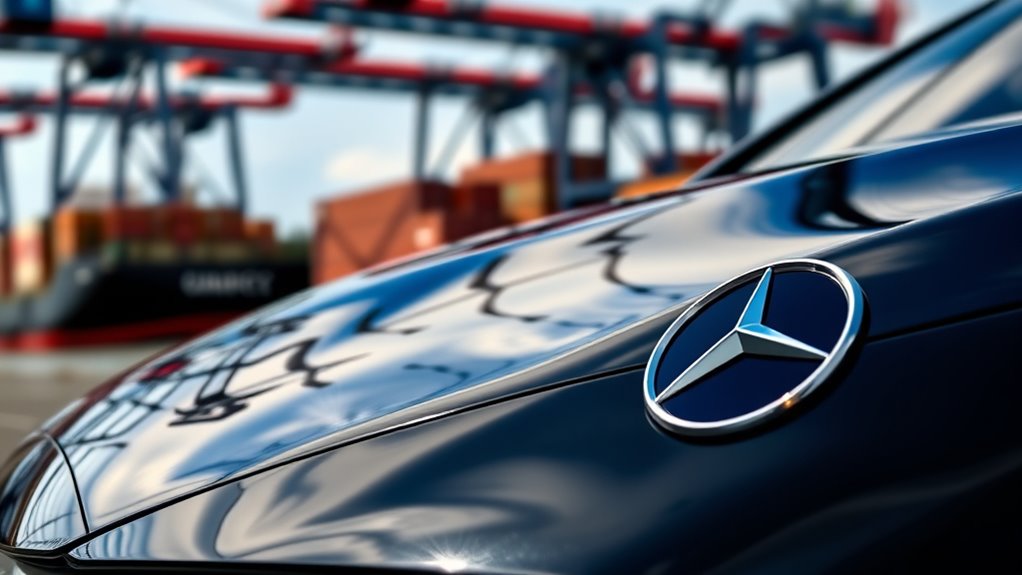
When porting and polishing your Mercedes AMG C63, guaranteeing compliance with local regulations and warranty terms is essential to avoid future legal or financial issues. Check your area’s emissions standards, such as particulate matter and NOx limits, and ensure catalytic converter efficiency remains intact to prevent non-compliance. Document emissions tests before and after modifications to prove adherence if challenged. Maintain factory exhaust baffling and active exhaust components to meet noise regulations, especially pass-by noise limits. Be aware that many warranties, like powertrain coverage, can be voided after cylinder head modifications, and dealership scans may flag airflow changes. Use EPA-compliant gaskets and follow certification standards like SAE J2558. Staying transparent and compliant safeguards your investment and keeps your vehicle legally roadworthy. Additionally, understanding how to identify bad lemon juice can help you avoid unnecessary repairs or replacements related to contaminated or spoiled fluids.
Tips for a Successful Port and Polish Process
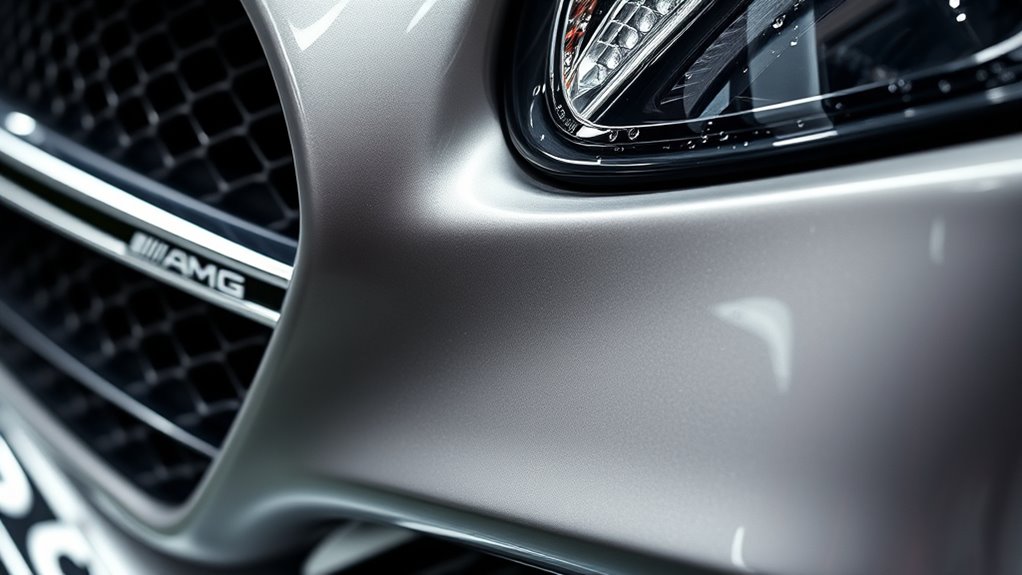
To achieve a successful port and polish on your Mercedes AMG C63, careful planning and attention to detail are essential from start to finish. Begin with thorough disassembly and cleaning to prevent contamination. Use specialized equipment like carbide burrs and polishing compounds carefully, balancing intake port roughness to avoid harming fuel atomization. For exhaust ports, more aggressive polishing boosts flow, but avoid overdoing it. Measure port dimensions and airflow with flow benches or bore scopes to identify restrictions. Protect surrounding components with masking to prevent damage. Document each step meticulously to prevent over-polishing. Remember, precision tools and professional guidance are vital for maximum results.
| Focus Area | Key Tip | Result |
|---|---|---|
| Disassembly | Clean thoroughly | Prevent contamination |
| Machining | Use the right abrasives | Achieve smooth, effective ports |
| Inspection | Measure airflow | Ensure modifications meet goals |
Monitoring and Maintaining Engine Performance Post-Modification
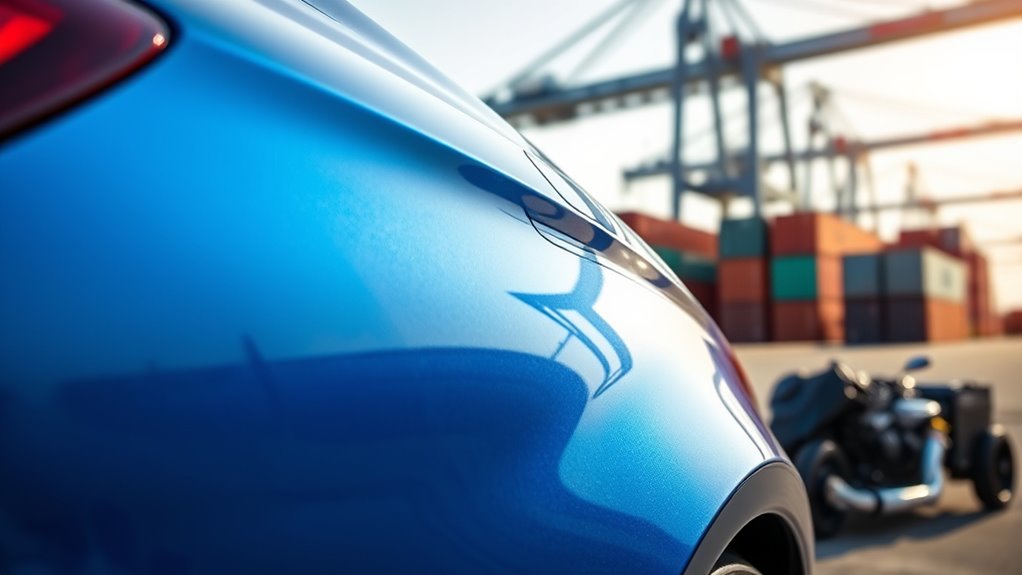
After completing port and polish modifications on your Mercedes AMG C63, continuous monitoring of engine performance is essential to guarantee ideal operation and longevity. Install OBD-II scanners with real-time data logging to track air/fuel ratios, ignition timing, and boost pressure. Use dyno testing before and after porting to measure horsepower and torque gains. Keep an eye on turbocharger efficiency, spool time, and boost thresholds, as airflow changes can impact performance. Monitor exhaust gas temperatures to detect lean conditions and check throttle response for consistency. Increase oil-change intervals, recalibrate ECU maps, and upgrade intercoolers if temperatures rise. Regularly inspect turbo bearings, replace spark plugs with colder types, and verify cooling system capacity. These steps help maintain reliability and maximize your C63’s enhanced performance.
Frequently Asked Questions
How Do Porting and Polishing Affect Warranty Coverage on My AMG C63?
You wonder how modifications like porting and polishing impact your AMG C63’s warranty. These upgrades can void parts of your factory warranty because they’re considered aftermarket alterations. However, if you document the work and use reputable installers, some warranty issues might be mitigated. Keep in mind, dealer discretion and legal protections like the Magnuson-Moss Act could help, but there’s still a risk of warranty denial for these modifications.
What Are the Signs of Improper Porting That Could Harm Engine Performance?
You notice your engine’s performance drops, with sluggish throttle response, decreased horsepower, or rough idling. You might hear increased noise or feel higher fuel consumption. If your engine runs hotter or develops unusual vibrations, these could be signs of improper porting. These issues happen because airflow becomes irregular, turbulence increases, or ports are misaligned, ultimately causing poor combustion, reduced efficiency, and potential long-term damage.
Can Porting and Polishing Be Reversed if I Change My Mind Later?
You might wonder if reversing modifications is possible once you’ve changed your mind. Usually, porting and polishing are tricky to undo because they involve altering engine heads permanently. Reversing requires costly, skilled work, often involving machining or replacing parts. Sometimes, it’s better to contemplate refining the modifications or selling the vehicle rather than facing the expense and hassle of undoing these changes later.
What Specific Tools Are Essential for a Professional Port and Polish Job?
You need essential tools for a professional port and polish job, such as 5-axis CNC machines for precise shaping, CAD software for designing, and flow benches to measure airflow gains. Surface preparation requires microfinishing abrasives, non-abrasive cleaners, and razor blades. For assembly, use torque wrenches, valve measurement tools, and leak-down testers. Pneumatic grinders and vacuum systems help in port material removal and debris containment, ensuring a high-quality, durable finish.
How Do Local Emission Laws Impact Modified Engines Like the AMG C63?
Your current question about local emission laws affects modified engines like the AMG C63 because many jurisdictions have strict regulations. You need to guarantee your modifications comply with state-specific standards, such as CARB or EPA rules, to avoid fines or legal issues. This means maintaining emissions system integrity, obtaining necessary certifications, and possibly undergoing testing. Ignoring these laws risks penalties, vehicle rejection, or voided warranties.
Conclusion
Think of porting and polishing as tuning the strings of a finely crafted instrument—you’ll unveil richer tones and sharper notes. But just like musicians respect their instruments, you must understand the risks and nuances involved. With the right expertise and care, you’ll transform your Mercedes AMG C63 into a symphony of power and precision. Stay informed, proceed thoughtfully, and your engine’s harmony will resonate for miles to come.
